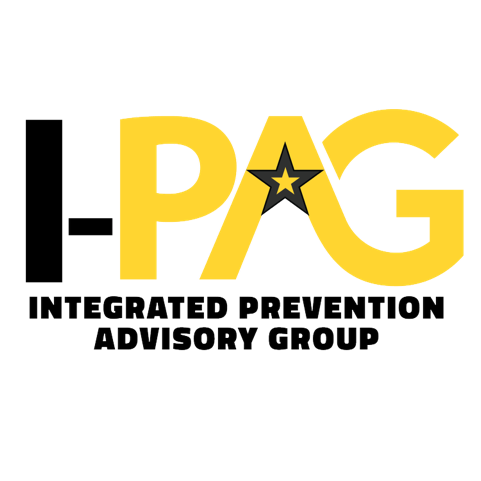
Frequently Asked Questions
Why is the Army developing an Integrated Prevention Advisory Group (I-PAG)?
The Secretary of Defense created a commission within the Department of Defense (DOD) to review the effectiveness of existing programs and policies designed to prevent and respond to sexual assault and other harmful behaviors. One of the key findings was that different parts of the current prevention system are working in silos, independent of one another. As a result, the DOD was tasked with:
- Developing a model for a dedicated, capable, credentialed prevention workforce
- Developing a professional credential for the prevention workforce
- Determining the necessary requirements for a full-time prevention workforce for the Active, Reserve and National Guard components of the military departments
- Ensuring that prevention programs and activities are evaluated through continual quality improvement
What are the first five locations where the I-PAG will be implemented?
Phase 1 I-PAG implementation will occur at the following locations:
- Fort Cavazos (formerly Fort Hood) (FORSCOM)
- Fort Riley (FORSCOM)
- Fort Sill (TRADOC)
- Hawaii (Schofield Barracks, 25th ID; USARPAC)
- South Korea (Camp Humphreys, Eighth Army; USARPAC)
What percentage of the I-PAG will be hired each fiscal year?
The Army intends to hire 20 percent of the initial I-PAG by the end of fiscal year 2022-23. Planning is underway to inform hiring actions in phases 2 through 4 (FY23-FY27). It is expected that the Army will execute hiring actions each fiscal year.
What capability will the I-PAG provide that doesn’t already exist?
This advisory group will be solely dedicated to building an integrated prevention system that establishes policies and practices to support leaders in their duty to increase protective factors and prevent sexual harassment; sexual assault, including child abuse and domestic abuse/intimate partner violence; self-harm; and workplace violence.
How many people will make up the I-PAG?
The I-PAG is currently in Phase 1 of implementation, and the Army expects to add approximately 1,200 personnel at Headquarters, Department of the Army, Army Commands (ACOMs), Army Service Component Commands (ASCCs) and Direct Reporting Units (DRUs) within the active component; about 680 of the 1,200 people will be aligned to HQDA, ACOMs, ASCCs, DRUs, Corps, Divisions, Commanders at echelon (Brigade Combat Team/Brigade equivalent) in the reserve components; and approximately 325 people at the Army National Guard component level.
What types of roles/functions will members of the I-PAG have?
The majority of I-PAG staff at HQDA and Army Command levels will be directly responsible for building the system and infrastructure to support the prevention capability. I-PAG personnel will conduct surveillance, collect data and use evidence-based/peer-reviewed research to determine which effective primary prevention activities would complement the military environment. Commanders will use this information and data to inform policy and guidance. Most I-PAG staff members will lead the planning, implementation and evaluation of primary prevention activities for two or more harmful behaviors (for example: sexual harassment, sexual assault, child abuse, child sexual abuse, death by suicide, domestic/intimate partner violence, workplace violence and discrimination).
Will personnel in the I-PAG displace currently serving civilian and military personnel?
No. The prevention workforce will be added to the existing encumbered authorizations. The Army, however, conducted information-gathering sessions and a staffing analysis survey to determine if there are personnel with skills and experience that make them suitable for transfer into the prevention workforce. Individuals with the appropriate skill sets, knowledge and experience can compete for I-PAG positions.
